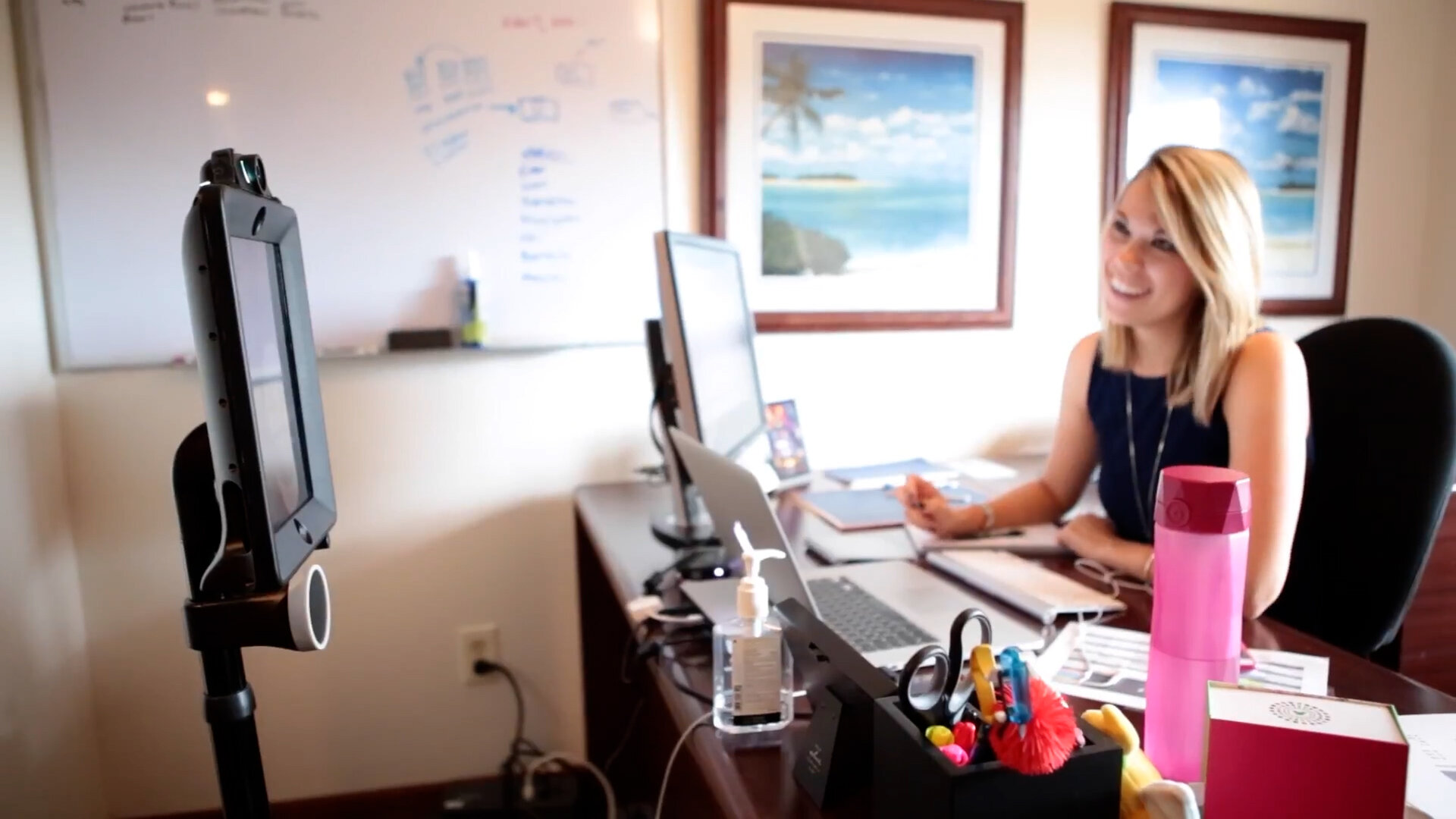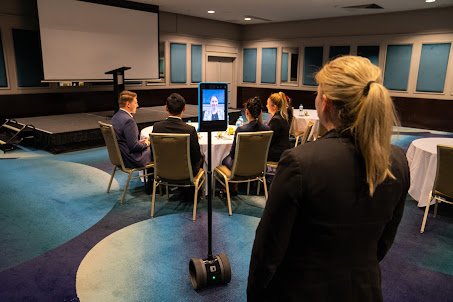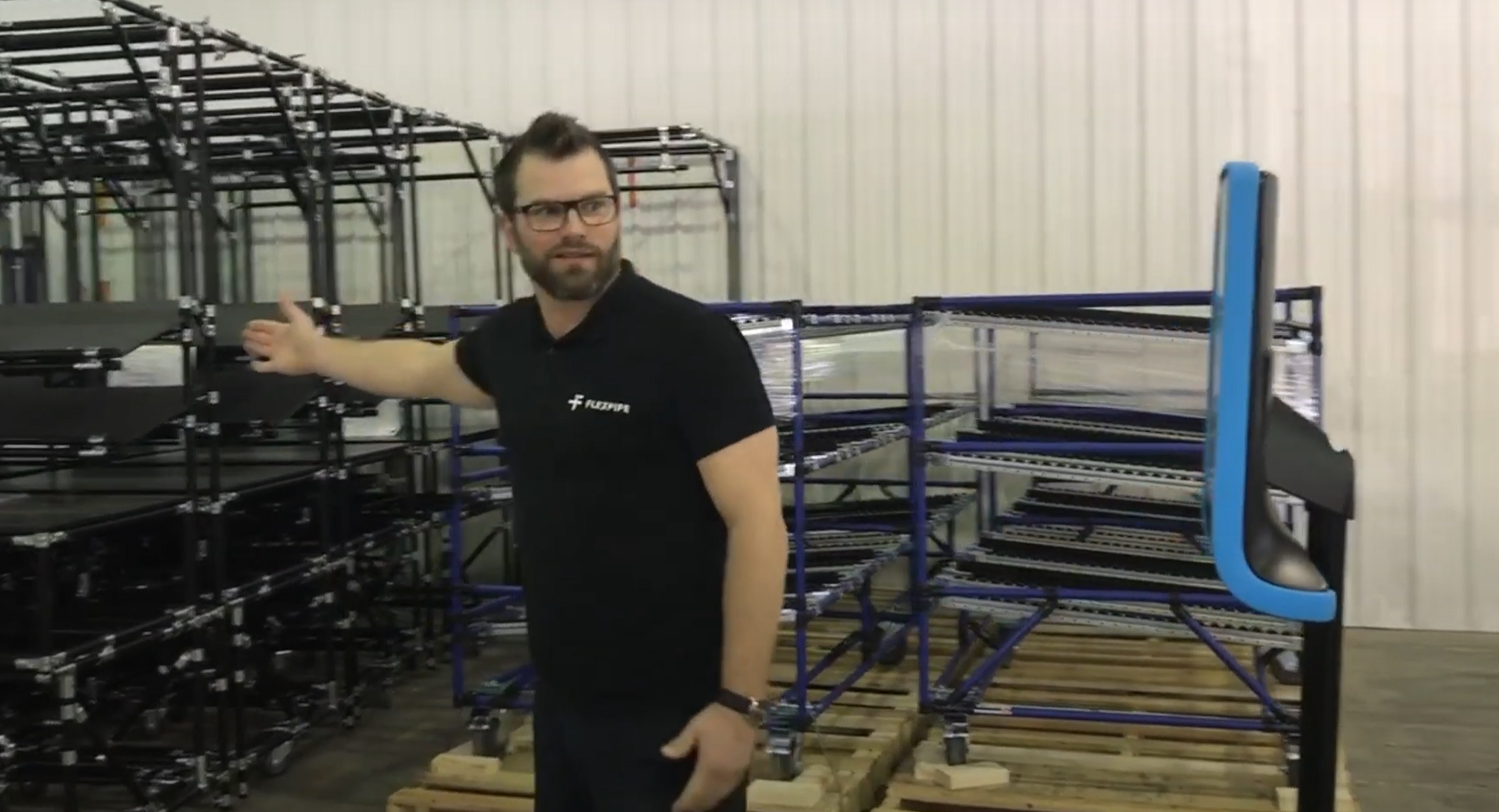3 min read
Why Businesses are adopting telepresence robots in droves
Telepresence robots are becoming more and more of a necessity in today's challenging business environment. Businesses employing telepresence...
5 min read
Benjamin Farkas May 27, 2021 11:40:37 AM
This article explores how telepresence robot technology and the metaverse is changing the way we work. With employers able to provide the best of both worlds-an an in-office experience with the flexibility and comfort of working from home or remote locations, more and more employers are increasingly turning to telepresence robots to get the job done. This technology is quickly becoming the future of work, and employers who fail to adopt it may be disadvantaged. Let us explain.

Telepresence robots are a new form of technology that has been gaining popularity. They allow people to be in one place and still interact with others as if they were in another. These robots, also known as remote presence robots, can transmit audio and video from the user's location to their destination. This makes it possible for those who have to travel or work remotely the ability to do so while staying connected with everyone else on site through these telepresence devices. Remote workers now feel more included and less isolated by being able to see where I am needed at any moment via a telepresence robot!
There is no longer any need for anyone working on jobs remotely or anywhere else to miss out on important meetings or presentations.
Two of the best telepresence robots available are the Double 3 by Double Robotics, and the GoBe Robot by Blue Ocean Robotics. Both robots are squarely designed for serious business applications, with inbuilt artificial intelligence and high-quality audio and video means organisations relying on these machines are at an advantage in providing this technology as a part of their hybrid work offerings, especially in light of Covid 19.
Pictured above, the impressive size makes the GoBe Robot a must have Hybrid Working tool for the executive office
Increased productivity: With employees no longer having to waste time travelling to and from work, or be stuck in traffic, employers can expect a significant increase in job productivity
Cost savings: Not only do employers save on the cost of employee travel, but they also save on office space and equipment costs, and now have the ability for managers to supervise from home or to find new remote employees to bring in new skills to the organisation.
Greater flexibility: Telepresence robot technology allows employees to work from anywhere they want, at any time they want. This increased flexibility is a huge advantage for working parents and caregivers
Improved communication: The ability to see and hear everyone in the room as if you were there in person makes for improved communication and collaboration among team members
Meeting CO2 obligations: With more and more companies developing co2 reduction strategies, the use of telepresence robots can play a significant role in helping organisations meet their targets.
As the world of work changes and becomes more and more distributed, it is important for employers to stay ahead of the curve by implementing telepresence robot technology into their businesses. This technology is changing not only the way we work, but also the way especially young people can integrate into the new world of remote working.
The World Economic Forum has predicted that the future of work will be characterised by a number of major changes. These changes include the growth of the contingent workforce, an increased focus on skills development, and the rise of telepresence robot technology that will boost productivity, ensure businesses have the right skills and lead to further economic development.
The growth of the contingent workforce is something that many businesses have already begun to experience. As technology makes it easier for people to work remotely, the traditional workplace is changing. Businesses that want to stay competitive will need to find ways to accommodate employees who are no longer bound by traditional office hours or locations, and the recent pandemic of the last few years has really helped create a renewed focus on how we support innovation while ensuring we retain talented staff.
Another trend that the World Economic Forum predicts will have a major impact on the future of work is the increasing focus on skills development. In order to keep up with the ever-changing labour market. Telepresence robots offer new ways for organisations to retain talented people, while also allowing temporary contractors to have somewhat physical access to worksites to improve morale and increase productivity.
There has been a lot of talk about the "metaverse" of late, and how this will change the future of work, and hybrid working arrangements. The metaverse is a digital world where people can interact and work together in a virtual space. It is often described as an extension of the internet, where people can use their avatars to engage in social and work activities.
While the metaverse is an interesting concept, it has yet to catch on for a number of reasons;
Everyone needs a VR headset. This is a major limitation, as not everyone has the means to purchase or use a VR headset.
Not everyone is comfortable with immersive virtual environments. Research shows that some people feel overwhelmed or out of control when engaged in VR activities.
There is a lack of trust and control in virtual environments. There have been some very high profile incidents, where people have felt harassed, and even in one case sexually assaulted in the metaverse.
Much like telephone calls - someone needs to 'pickup', if you want to chat with someone in the metaverse, you have to be in the metaverse at the same time. This limits its usefulness for many people who want to use it for work purposes as it's just not feasible to be wearing a VR headset all-day
HR Safety concerns; until we figure out how to deal with the social and emotional aspects of VR, many people will not want to use it for full-time work purposes, citing a number of issues such as eye strain, and WHS considerations if a colleague was injured for example falling over) while in VR.
These limitations have led to a number of big businesses looking at telepresence robot technology as the alternative, and its is emerging as a front runner. Unlike the limitations of the metaverse, Telepresence robots address the above issues something like this;
No special hardware or software is required for remote employees to use the telepresence robots. All they need is an internet connection and a web browser.
You are you. People are not hiding behind avatars, your colleagues can see your face, expressions and connotations in speech and can engage with you appropriately.
Since the robot user has full control of the robot, they take on a responsibility to use the equipment seriously
This robot's most valuable feature is the fact someone can dial in (administrator controlled obviously) without the need for someone to 'pickup'. This gives rise to employment satisfaction among remote workers, who can now engage on 'watercooler' talk or catch up with colleagues on shift changes etc.
There are near-zero safety concerns around the use of telepresence robots. With the Double 3, for example, having autonomous click-to-drive functionality with advanced obstacle avoidance, there's no chance of running over someones' toes!
In conclusion, there is a lot of experiments being conducted by many organisations, trying to navigate the current labour market challenges at the current time, but what we can say is that not everyone will be impressed or engaged long term with the Metaverse, but our expectations that industries such as manufacturing, and logistics, will continue to have success deploying innovative telepresence robot technology in their key office workplace.
If you want to see what all the fuss is about, and experience first-hand how telepresence robot technology can change the future of work, then take the robot for a free test drive. Visit our website to find out more.

3 min read
Telepresence robots are becoming more and more of a necessity in today's challenging business environment. Businesses employing telepresence...

1 min read
A lot has changed in the past few years. With the rise of telecommuting and remote work, more people are able to work from home...

3 min read
Introduction The world of work is evolving rapidly, and as more employees work remotely, companies are seeking ways to enhance communication,...